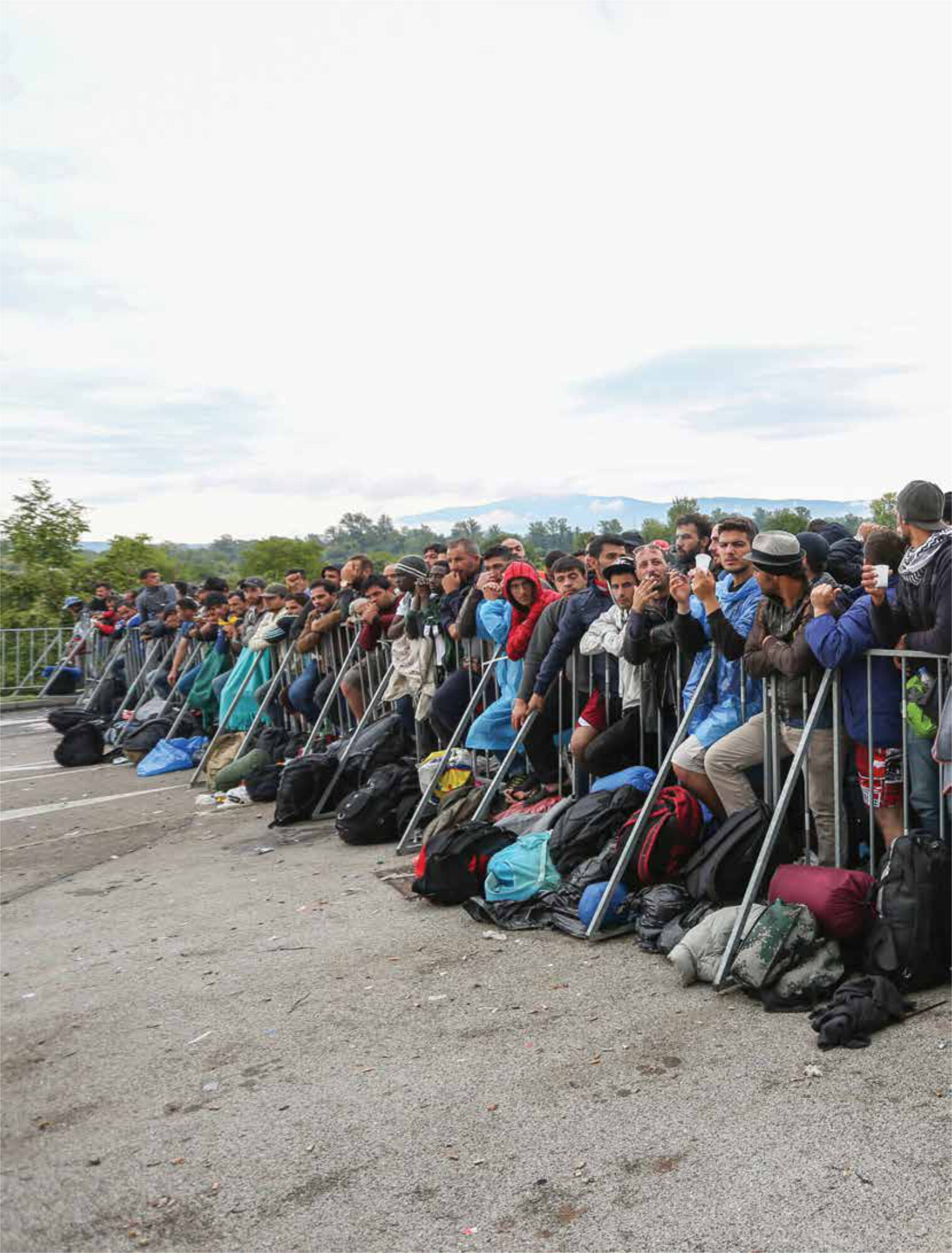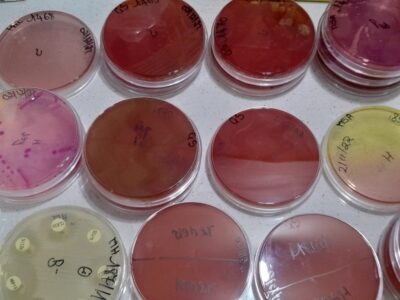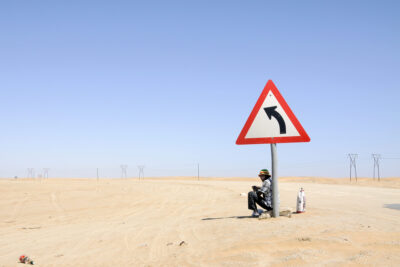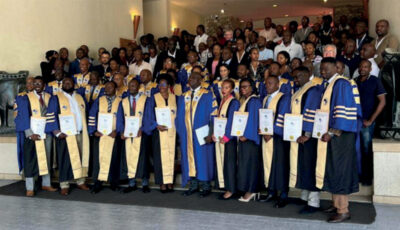Main content
Recent measles outbreaks among refugees in Germany and France as well as serological studies among asylum seekers in Germany showed that immunity against measles and other vaccine-preventable diseases may be suboptimal. In the Netherlands, vaccinations included in the National Immunisation Programme (NIP) are offered to asylum seeker children up to 19 years of age, if considered necessary. To assess the level of protection in adult asylum seekers, we conducted a serosurvey in three asylum seeker centres between July and August 2016. The results can serve as a basis to guide Dutch vaccination policies. In this article, we describe the first phases of the study, which is expected to be completed in 2017.
Background
The number of people applying for asylum in the Netherlands increased sharply in 2015. At the end of 2015, the Central Agency for the Reception of Asylum Seekers (COA) housed almost 50,000 people in asylum seeker centres. In 2016, the influx has started to decline, and as of the first of July 2016 some 37,000 people were living in asylum seeker centres. About 40% of those asylum seekers are from Syria, followed by Iraq, Afghanistan, Eritrea and Iran. Harsh living conditions and poor hygiene during their journey and overcrowding in asylum seeker centres make asylum seekers a vulnerable group for contraction of infectious diseases.
As part of the infectious disease control policy in the Netherlands, asylum seekers are routinely screened for tuberculosis upon entry into the country. Local public health services address outbreaks of, for example, scabies, varicella and hepatitis A. Overall, the risks from infectious diseases among asylum seekers seem limited and manageable [1]. However, recent measles outbreaks in asylum seeker centres in Germany and France show that the levels of immunity against measles infection among asylum seekers may not be sufficiently high to ensure herd immunity [2,3]. Likewise, a serological study among asylum seekers in Germany found relatively low levels of seroprotection against measles infection (79.9%), whereas, ideally, the herd immunity threshold should be at least 94% [2]. Insight in the seroprotection of adult asylum seekers in the Netherlands against vaccine preventable diseases is lacking.
The European Centre for Disease Prevention and Control (ECDC) recommends assessing the immunisation status of all asylum seekers and offering immunisation according to the national immunisation programme [4]. In the Netherlands, currently only the vaccination status of asylum seeker children up to 19 years of age is assessed, and a vaccination plan is made if vaccinations are needed [5]. Adult asylum seekers are not assessed and are not offered immunisations.
This study aims to assess the seroprotection levels against a range of vaccine-preventable diseases (diphtheria, tetanus, polio, measles, mumps, rubella, varicella and hepatitis A) in adult asylum seekers, and to collect essential information on demographics and vaccination history by means of a questionnaire. For that purpose, the National Institute for Public Health and the Environment (RIVM), in collaboration with Radboudumc, set up a serosurvey, whose results can serve as a basis to guide vaccination policy.
Study design
The research population consisted of adult asylum seekers aged 18 to 45 years who originate from Ethiopia, Eritrea, Iraq, Iran, Afghanistan and Syria. The rationale behind the choice of this age range was that asylum seeker children below the age of 19 already receive vaccinations if deemed necessary. Persons above the age of 45 likely experienced prior natural infection in their country of origin and therefore already have protective antibody levels, as was described by Toikkanen and colleagues [2].
In this study, participants were divided into three groups with respect to country of origin: 1) Syria, 2) Iran, Iraq and Afghanistan and 3) Eritrea and Ethiopia. Based on power calculations, the aim was to include 300 participants in each group. Likewise, within each country group, participants were also assigned to the following age groups: 18-25 years, 26-35 years and 36-45 years. Per age and country group we strived to include 100 participants, i.e. 900 in total.
In consultation with the COA, the refugee centres in Dronten, Luttelgeest and Almere were selected as study sites. These relatively large centres appeared to be the most suitable with respect to numbers of asylum seekers originating from the countries included in this study. All study materials, such as the invitation letter, questionnaire and consent form, were translated into languages most commonly spoken by asylum seekers who were invited to participate in the study (Arabic, Farsi, Tigrinya and Amharic – besides Dutch and English). We also included a flyer with icons describing the study graphically to reach illiterate asylum seekers. In addition, we put up posters at the study sites, which displayed sampling days and general information on the study. Interpreters, who were trained prior to the beginning of the study, facilitated communication with study participants.
Serological tests will be performed in fall 2016, using assays as described in the PIENTER study, which has a comparable study setup and is periodically conducted in the general Dutch population.
| Country of origin | Age group in years | Total | ||
|---|---|---|---|---|
| 18-25 | 26-35 | 36-45 | ||
| Syria (group 1) | 92 | 117 | 79 | 288 |
| Iran (group 2) | 32 | 54 | 25 | 111 |
| Iraq (group 2) | 26 | 43 | 13 | 82 |
| Afghanistan (group 2) | 35 | 26 | 10 | 71 |
| Total group 2 | 93 | 123 | 48 | 264 |
| Eritrea* (group 3) | 13 | 25 | 15 | 53 |
| Total | 198 (33%) | 265 (44%) | 142 (23%) | 605 |
*of these, one participant was born in Ethiopia
Data collection
It is obligatory for asylum seekers to report to the foreign police and their refugee centre on a weekly or bi-weekly basis. In Dronten and Almere, invitation letters were distributed on this reporting day one week ahead of the study. The invitation letter included information on the sampling days and hours during which asylum seekers who were interested in participating in the study were expected. In Luttelgeest, housing counsellors visited the refugees personally to inform them about the study and to distribute invitation letters.
On the sampling days, interpreters explained the study aim and procedure to participants, either in a group or on an individual basis. Following the general explanation, interpreters assisted with filling in the informed consent form and short questionnaire. Female medical personnel subsequently collected one tube of blood. To ensure privacy during blood collection and lower cultural barriers that might have hindered female asylum seekers from participating, we set up folding screens. Participants received 10 euros as compensation for their cooperation.
Between 11 July and 10 August 2016 – distributed over nine sampling days – 633 asylum seekers participated in the study. Based on the questionnaires, we found that a number of these were born in countries other than specified in the inclusion criteria. In some instances, information on the age of participants was missing. Hence, the results of the preliminary analyses were based on 605 participants. Of these, 80% were male and the mean age was 29 years. The high percentage of males was expected, as recent figures released by COA show that 72% of persons living in refugee centres who are between 18 and 39 years of age are male. Table 1 shows the number of participants according to country of origin and age group.
According to figures provided by COA, a large group of asylum seekers had the Ethiopian nationality. However, during the data collection, we found that hardly any asylum seekers from Ethiopia who spoke Amharic lived in refugee centres. The likely explanation for this is that Eritrean asylum seekers often have Ethiopian nationality, due to the complex political situation since the 1993 referendum on Eritrean independence. Hence, translation of the study material into Amharic (language commonly spoken in Ethiopia) would have been dispensable.
In general, the number of participants originating from Eritrea was considerably lower compared to other countries (Table 1). The reason for the lower participation was likely a different socio-cultural perception of research of that kind. Interpreters reported that – despite explanation of the study procedure – some Eritreans refused to participate, as they worried that laboratory results could negatively influence their asylum application. As the response rate of Eritreans in all refugee centres was lower than expected, we assumed that the response in other refugee centres would be similarly low. Therefore, we refrained from expanding the study and accepted that the precision of seroprevalence estimates for the group of Eritreans would be lower than for participants from other countries of origin. For the latter countries (Syria, Iran, Iraq and Afghanistan), the total number of recruited participants was satisfactory (n = 552).
Future
Serological tests will be performed in the fall of 2016. Additional analyses and reporting will follow in 2017. Among other analyses, we will compare the seroprevalence findings in asylum seekers with seroprevalence findings in the Dutch population tested in the course of the PIENTER study. The results can ultimately serve as a basis to guide vaccination policy for adult asylum seekers.
Acknowledgements
We would like to thank Jan van Burg and Joan Kooren from the COA for their support during the planning phase of the study. We would also like to express our gratitude to the location managers and housing counsellors from the refugee centres in Dronten, Luttelgeest and Almere for their cooperation and help on logistics.
Moud Curvers¹, Gudrun Freidl¹,², Jeannine Hautvast³, Helma Ruijs¹, Hester de Melker¹, Fiona van der Klis¹, Alma Tostmann³, Irene Veldhuijzen¹
- Centre for Infectious Disease Control, National Institute for Public Health and the Environment (RIVM), Bilthoven, the Netherlands
- European Programme for Intervention Epidemiology Training (EPIET), European Centre for Disease Prevention and Control, Stockholm, Sweden.
- Academische Werkplaats AMPHI, Afdeling Eerstelijnsgeneeskunde, Radboudumc, Nijmegen, the Netherlands
Note
This article will also appear in Dutch in a special issue on asylum seekers of the RIVM-publication Infectieziekten Bulletin, November 2016, www.rivm.nl/Onderwerpen/I/Infectieziekten_Bulletin
References
- Duijnhoven Y, Sonder G, Siedenburg E, et al. Asielzoekers en infectieziekten, een kwestie van beheersing. TSG. 2016;94(1) Spectrum:8-9.
- Toikkanen SE, Baillot A, Dreesman J, Mertens E. Seroprevalence of antibodies against measles, rubella and varicella among asylum seekers arriving in lower Saxony, Germany, November 2014-October 2015. Int J Environ Res Public Health 2016;30;13(7).pii: E650.
- Jones G, Haeghebaert S, Merlin B, et al. Measles outbreak in a refugee settlement in Calais, France: January to February 2016. Euro Surveill. 2016;21(11):30167
- European Centre of Disease Prevention and Control. Systematic literature review of the evidence for effective national immunization schedule promotional communications. Stockholm: ECDC;2012.
- GGD GHOR Nederland. Protocol vaccineren asielzoekerskinderen 0-19 jaar PGA. 2016. https://www.ggdghorkennisnet.nl/thema/publieke-gezondheidszorg-asielzoekers-pga/publicaties/publicatie/1484-rvp-protocol-vaccineren-asielzoekerskinderen-0-19-jaar



















































